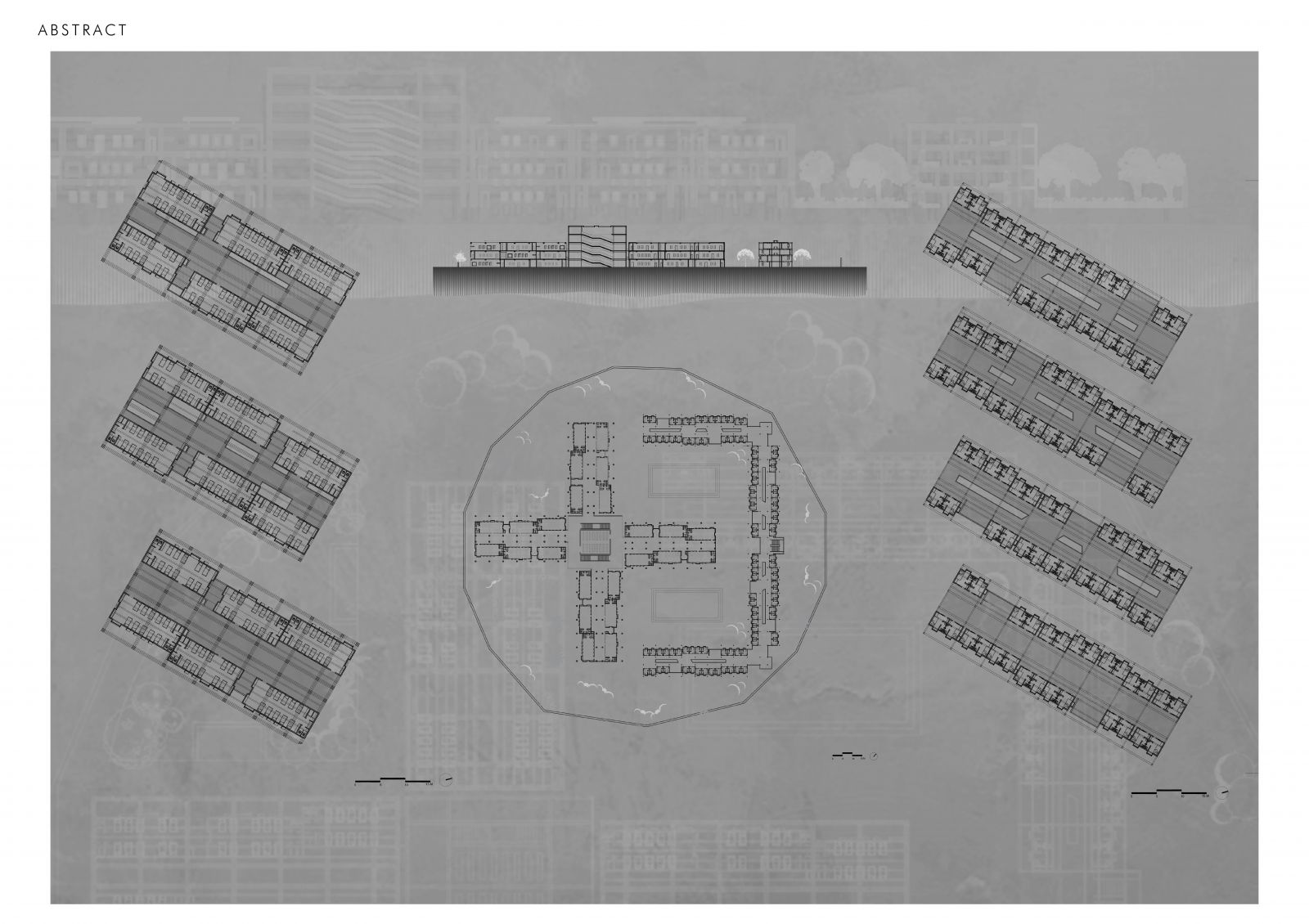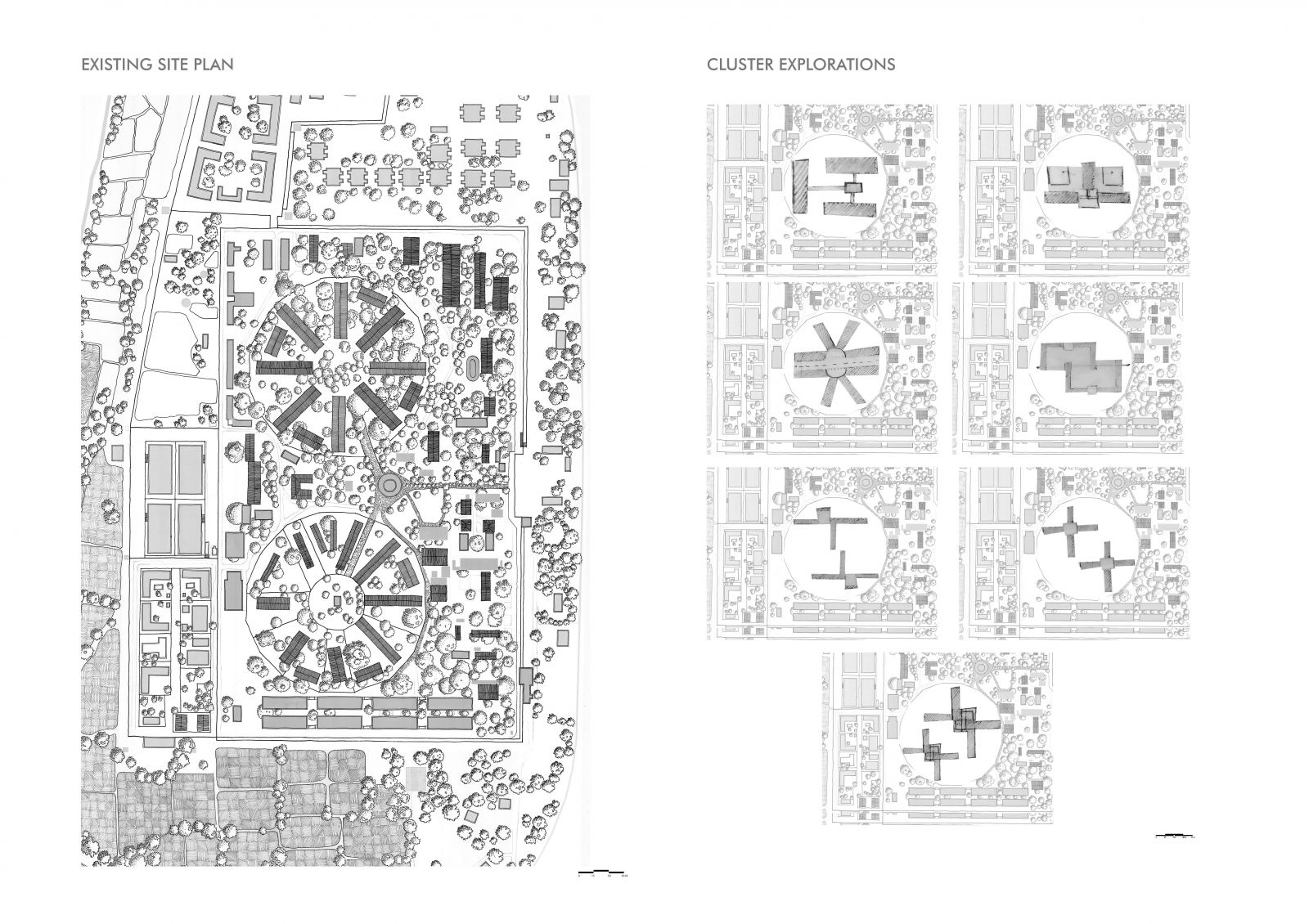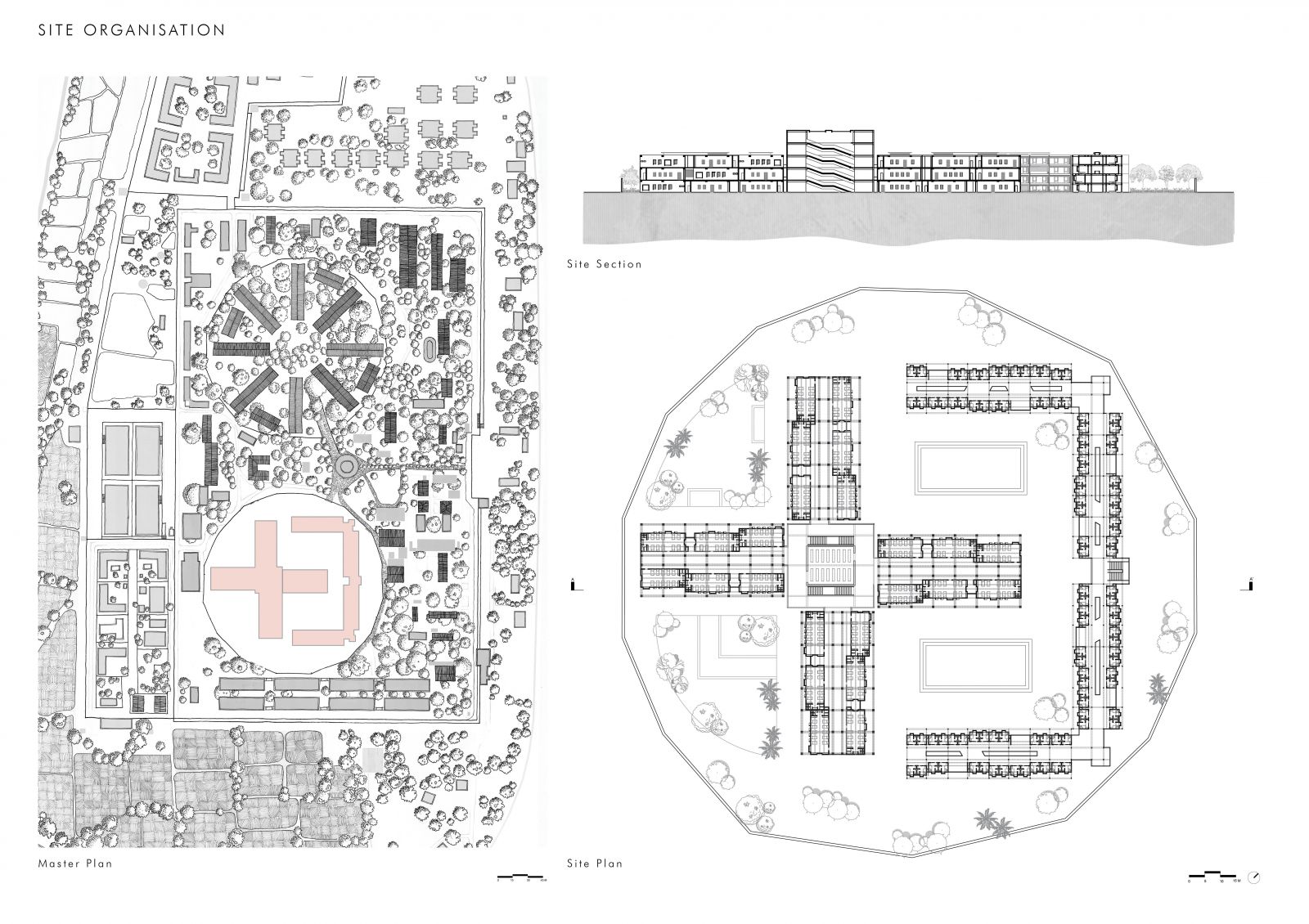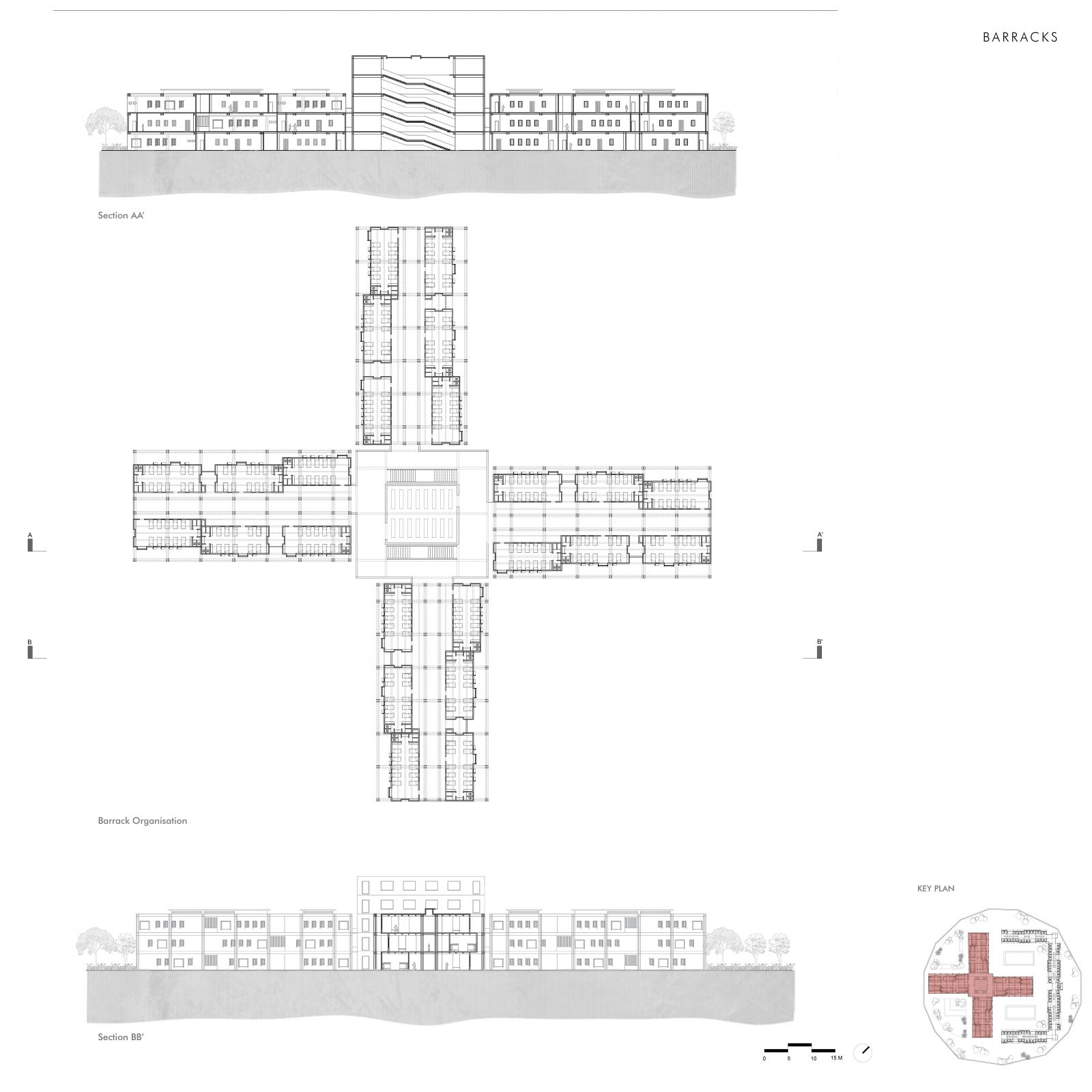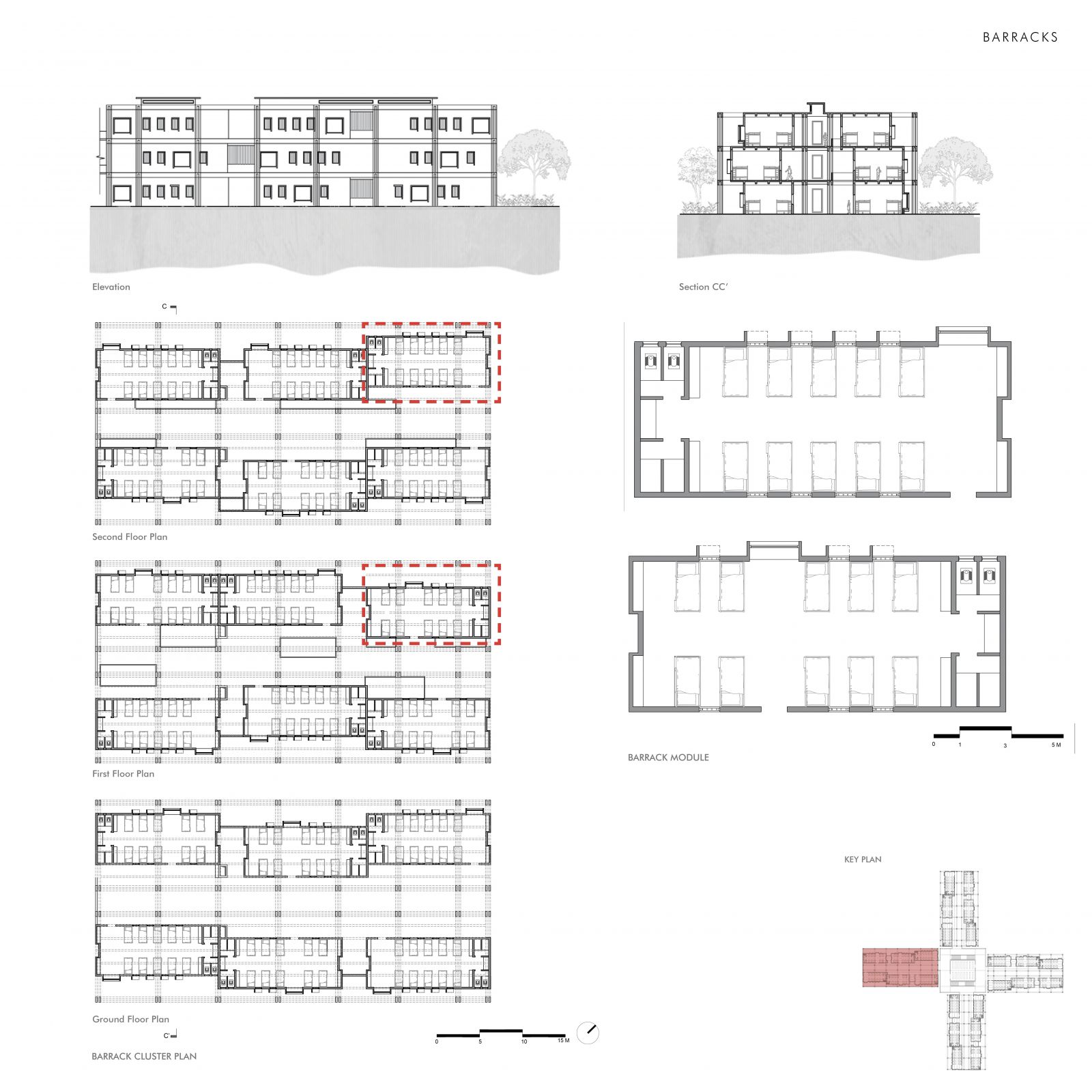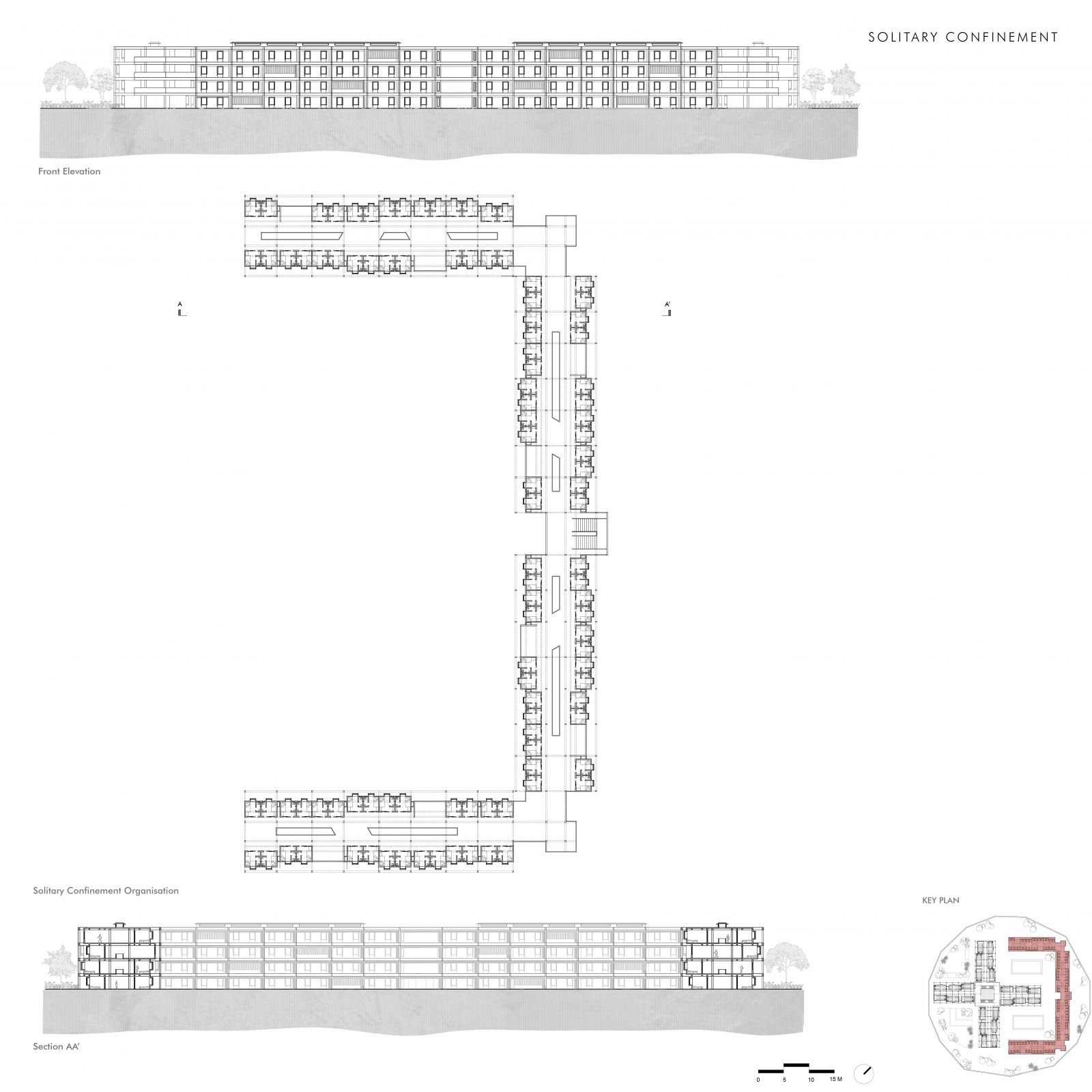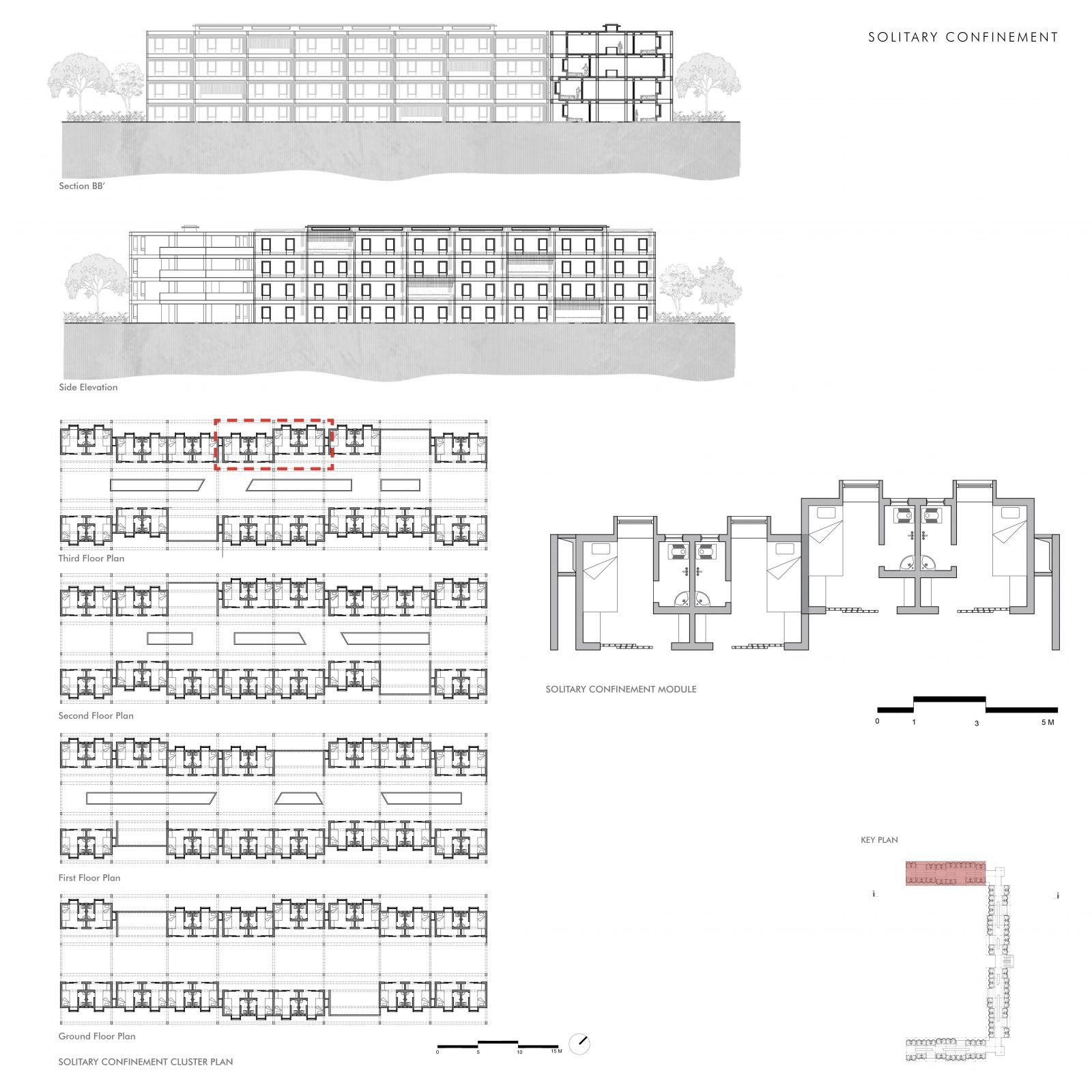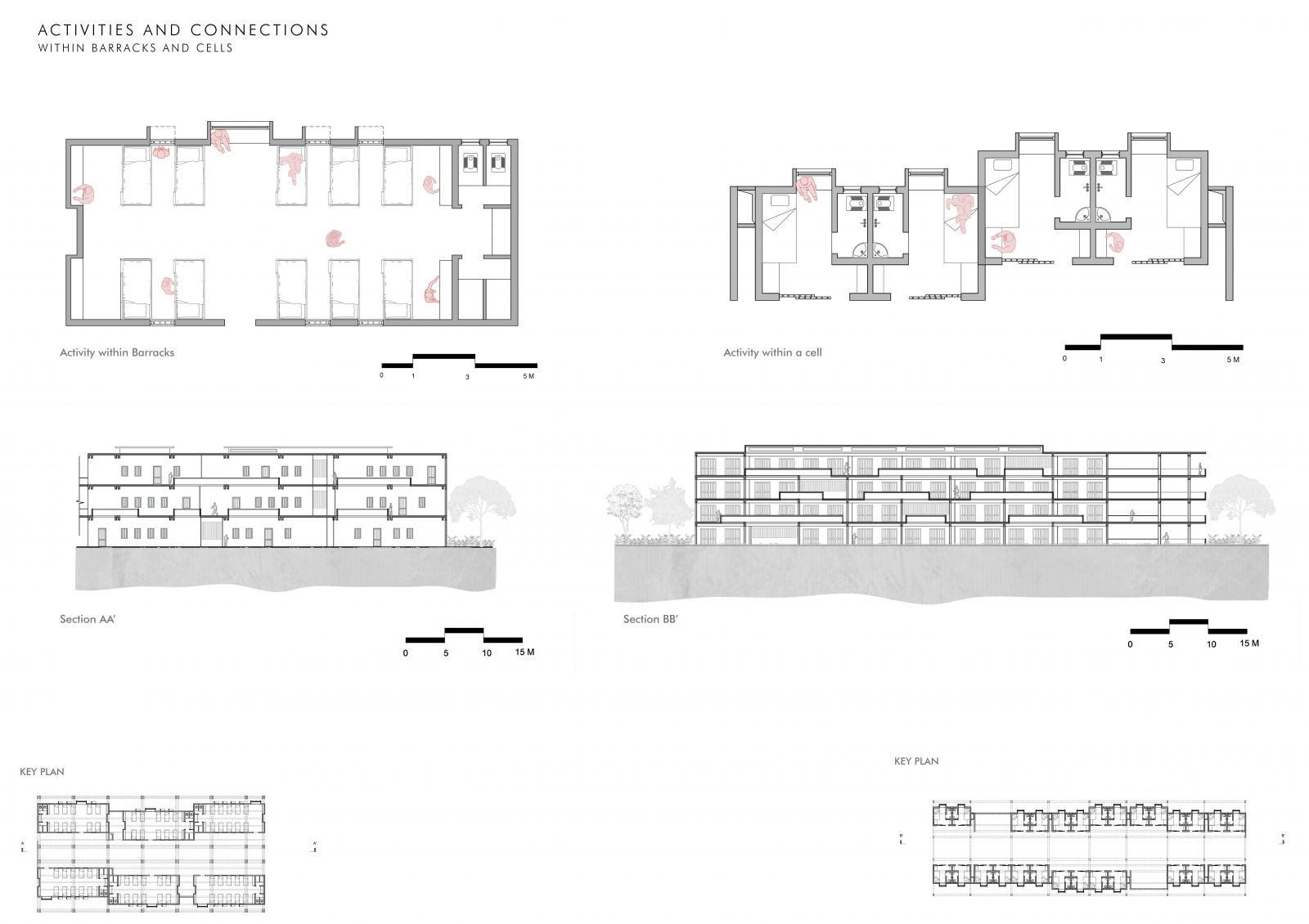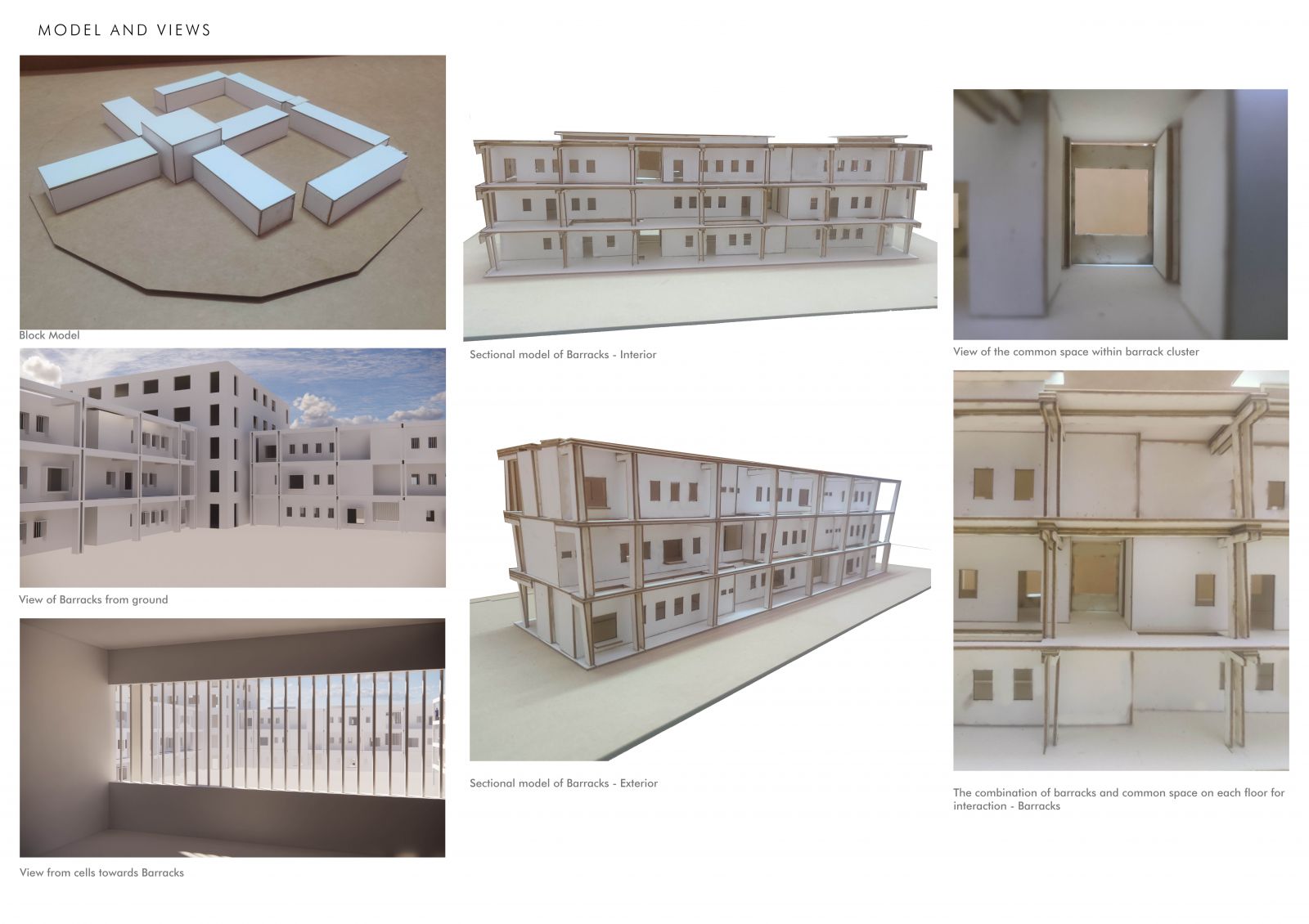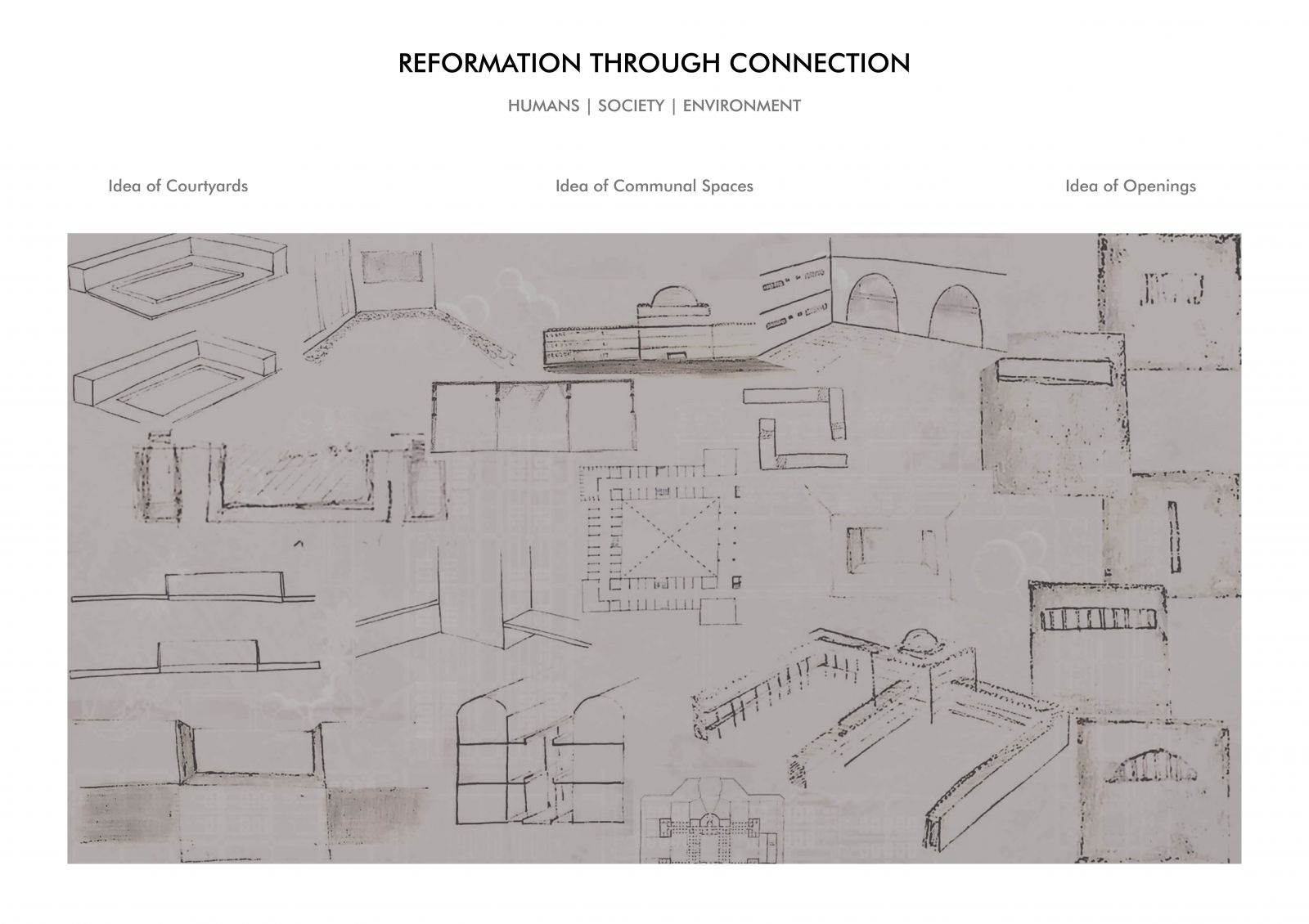Your browser is out-of-date!
For a richer surfing experience on our website, please update your browser. Update my browser now!
For a richer surfing experience on our website, please update your browser. Update my browser now!
With prisoners staying in the same place for several years, it becomes essential to ensure that the prison's architecture incorporates spaces for community living. The prison should become a place where the prisoner doesn’t feel completely isolated from society but also where they can realize the severity and consequences of the crime they have committed. The visit to Sabarmati Jail gave a different experience of prison life. Instead of convicts being confined to small rooms, the prisoners stay in barracks - a group of 25 people - and have access to the entire prison complex throughout the day. The place had a sense of community living with the shared barracks and the system of working. The existing prison architecture has barracks arranged in a panopticon organization and is single-story in height. The current prison architecture doesn’t incorporate the issue of overcrowding faced in prisons nowadays. The design focuses on reimagining the architecture of the existing barracks and cells by replacing one of the Panopticon systems in place by reforming through connecting the prisoners to the surroundings, environment, and the people around them.
